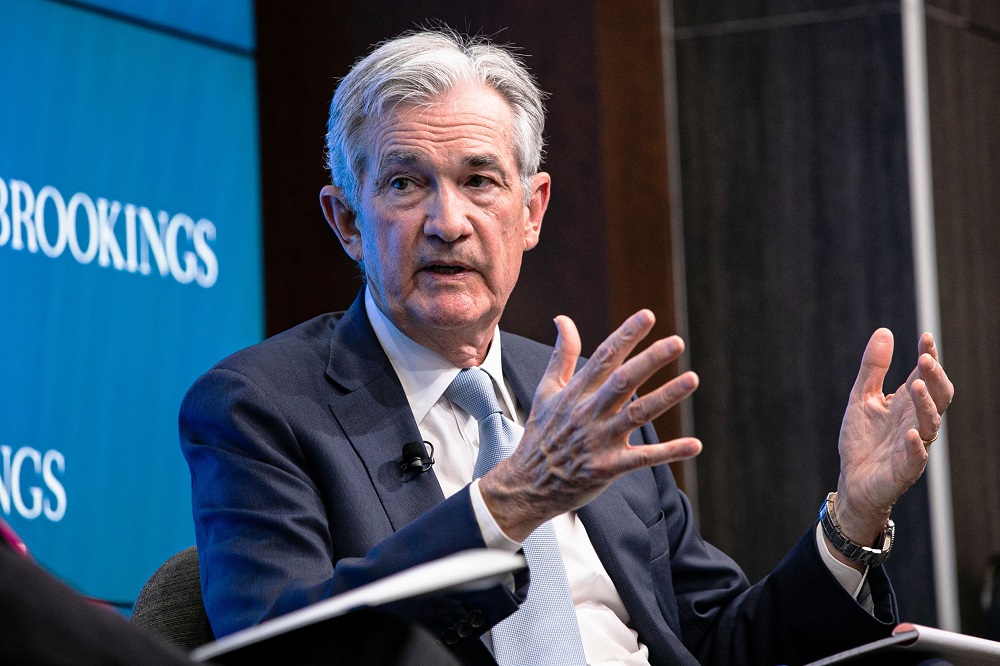Rate hike rush
FED, ECB and Bank of England will all probably hike policy rates this week, but not necessarily by the same amounts.

FED Chairman Powell
>> What about the monetary policy targets of some central banks?
Changes in interest rate differentials will be seized upon by traders as a spur to currency movements, but we think there’s a more nuanced way in which rate-changes impact the FX market.
The market expects the Fed to hike 25-bps this week while the expectation for the ECB and the BoE is for 50-bps. We go along with these calls. On the surface, then, this would seem likely to play into the hands of more dollar weakness against the euro and the pound. However, things might not play out like this.
We don’t doubt that it is understandable that there’s a fixation on interest rate differentials. Casual observation of the movement in interest rate differentials and currencies seems to suggest a relationship and econometric studies have often backed this up.
However, there are two observations that we would note here. The first is that the relationship, if it exists, seems much closer when it comes to the dollar against other currencies, than cross rates where, in our view, the relationship is mostly non-existent.
The second thing we’d note is that the US rate differential with other countries tends to rise when the Fed is tightening, and fall when the Fed is easing. This is easily understandable when it comes to the dollar against other major currencies such as the euro, yen and Swiss franc, simply because the central banks in these countries don’t move rates as much as the Fed.
Armed with these two observations, we’d argue that the key here is not really the rate differential but, instead, whether the path of rates is producing weakness in asset prices like stocks and bonds, or strength. If it is weakness then the dollar is likely to rise as its safe-asset qualities shine. Conversely, if the path of rates causes risk assets to rise, the dollar is more likely to decline.
For example, if we look at this current rate-hike cycle, the Fed has lifted rates by more than the ECB and other major central banks – and the dollar has rallied. Note also that this period has seen a very sharp fall in asset prices which, in our view, is the key reason why the dollar has risen, not the widening of interest rate differentials.
To see this, compare the current cycle with the Fed tightening cycle of 2015-18 where other central banks did not tighten at all so the rise in the differential between the US and elsewhere was particularly notable. But this period did not see the dollar rise at all; it actually ended lower than where it started. We think this was because the Fed’s tightening did not provoke a slump in asset prices.
>> Interest rate outlook for 2023
The bottom line is that we should not watch rate differentials but, instead, whether the path of policy is causing asset prices to rise or fall. In this regard, we know that Fed policy matters more than others given the global dominance of the dollar in things like international lending.
Coming back to this week, the key for the market is not whether the ECB hikes more than the Fed. Instead, the important consideration is whether the Fed’s actions and, more specifically its verbal communications, are still consistent with the idea that the end of the cycle might not be too far away.
We have seen this sort of sentiment lead the market to believe that rate cuts could start before year-end and it has clearly been something that has bolstered asset prices in the past few months – and led to a lower dollar.
Do we think that the Fed’s message this week will help maintain the strength in asset prices and the weakness in the dollar? Yes, we do and, besides, with the Fed in data-dependent mode now, there seems a good chance that the optimism in the market will persist for a while yet as long as inflation pressure seems to be receding. Hence, we do see the dollar sliding further, but not necessarily because rate differentials might start moving against the dollar.








